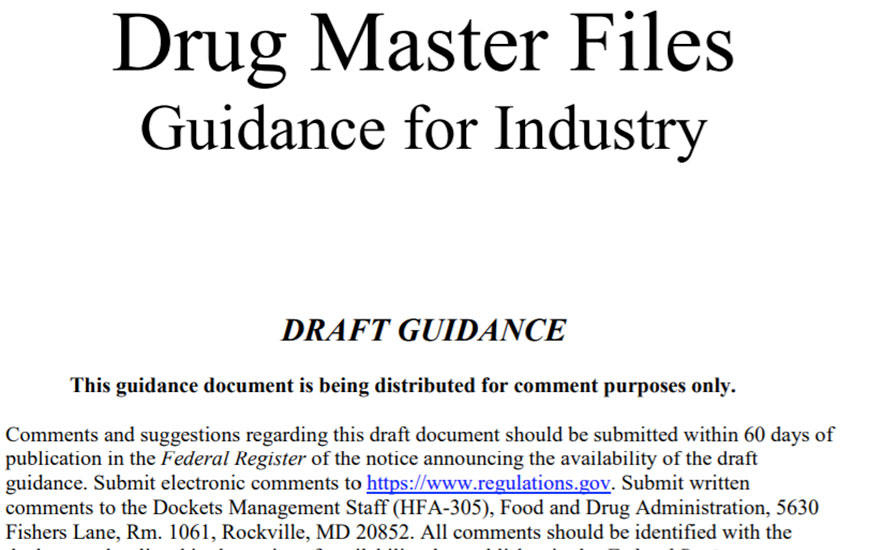A new draft guidance titled (quite originally) Drug Master Files (here) has replaced the Drug Master Files: Guidelines that was published in 1989. There have been many changes to the requirements and procedures for DMFs based on new laws, policies, and procedures, as well as procedures associated with GDUFA commitment letters for ANDAs, and (of course) electronic filing requirements. The document also provides a new contact person for the guidance.
The document states:
“This guidance provides FDA’s current thinking on drug master files (DMFs), which are submissions to FDA that may be used to provide confidential, detailed information about facilities, processes, or articles used in the manufacturing, processing, packaging, and storing of human drug products. DMFs can contain other types of information as well (e.g., toxicology information, shared system REMS (risk evaluation and mitigation strategy)).”
The uses of DMFs and their legal status, as well as the authorization processes, are discussed. DMF format and expectations are outlined, and issues associated with the use of DMFs for BLAs for biologic products are also discussed.
There is a fairly lengthy discussion of the use of the Letter of Authorization (LOA) process, how it is to be used, and what should and should not be included in a LOA.
The various types of DMFs are outlined (Types II-V), along with the requirements for each (remember that Type I DMFs that covered manufacturing site, facilities, operating procedures, and personnel were eliminated in 2000). The guidance also discusses the need for annual reports to update the DMF, as well as amendments to the DMF.
This is a welcome draft guidance on a topic for which there is always a tremendous amount of discussion and questions.




